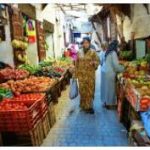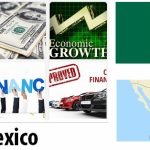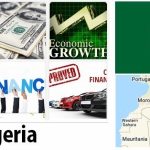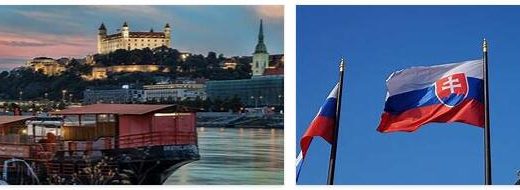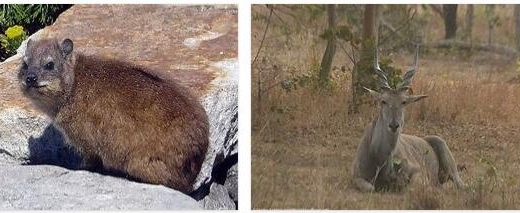Morocco Economy Facts
Economical overview
Morocco is a poor country and, unlike other states in the region, has no oil or gas resources. The economy is heavily dependent on agriculture, but tourism has also become an important source of income. Morocco is also the world’s largest phosphate exporter. Casablanca is usually described as the country’s “economic capital”.
Agriculture is affected by drought for some years, while tourism and phosphate exports are affected by economic activity in the outside world. The economy is therefore vulnerable, and unemployment and poverty are widespread. During the 2000s, there has been an upswing in other areas, notably the service sector with increased tourism, construction and trade as well as in the manufacturing industry.
- Countryaah.com: Major imports by Morocco, covering a full list of top products imported by the country and trade value for each product category.
In 2019, the country received nearly 13 million tourists, which is why the pandemic caused by coronovirus will have serious effects in 2020. Tourism revenues have always recovered after periods of fighting and terrorism. Even during the chaotic revolution year 2011, which included, among other things, a bloody terrorist attack on the tourist routes in Marrakech, visitor numbers increased. It is explained by the fact that during the Arab Spring, the country still appeared to be calmer than the rest of North Africa and the Middle East. Many of the sun tourists who would normally have gone to Egypt or Tunisia chose Morocco instead. Most of the tourists come from France and Spain, and many are foreign Moroccans on home visits.
Since the 1980s, reforms involving, among other things, the sale of state-owned enterprises have been on the program, in order to get the state’s business organized and limit the bureaucracy that impedes private business, foreign trade and investment. However, the changes have been slow. Bureaucratic hassle and corruption remain barriers to increased growth and competitiveness.
For many years, the state budget has had significant deficits, and the government has been forced to use revenues from privatizations for ongoing expenditure rather than for new investments. A major expenditure item was previously subsidized prices for petrol and petroleum products, but in 2014 the government announced that the state subsidy for gasoline and fuel oil had been abolished and that subsidies on diesel had also been reduced. Wheat, sugar and flour, on the other hand, were chosen to continue subsidizing because so much of the population lives under small circumstances, and price increases risk giving rise to strikes and demonstrations. Another heavy expense is wage costs in the over-staffed public sector.
- Abbreviationfinder.org: Check this abbreviation website to find three letter ISO codes for all countries in the world, including MAR which represents the country of Morocco. Check findjobdescriptions to learn more about Morocco.
Morocco covers about 95 percent of its energy consumption through the import of fossil fuels. Therefore, it can be important on several levels that renewable energy investments are in progress, especially solar energy. In 2016, the first step was taken in using the world’s largest thermal solar power plant, which benefits from the Sahara sun. The solar power park has been located in Ouarzazate on the edge of the desert and, with an extensive surrounding electricity grid, will provide one million people with electricity.
The railway network is run by a state company and connects the big cities. In 2018, the first high-speed railway in Africa between Casablanca and Tangier was inaugurated via Rabat (see Calendar). There are plans to eventually move it along the Mediterranean coast to Oudja at the border with Algeria. Spain and Morocco decided in 2003 to implement the plans for a four-mile long railway tunnel under the Gibraltar strait that will link Africa with Europe, but construction has not begun. Morocco has several major ports, most along the Atlantic coast. Most importantly, it is in Casablanca, which is one of Africa’s largest, but most passenger ships call Tangier. A new major port east of the city was completed in 2007.
The upswing in some industries also has a downside. Urbanization along coastal routes increases the demand for sand. The UN environmental program Unep claims that the construction industry has thus also received an illegal element, a “sand mafia”. According to Unep, one-tenth is extracted from the sand the construction industry consumes without a permit. Other sources link the sand thefts to money laundering.
The film industry has become a good source of income, not least for service industries, with spectacular locations for many international productions, especially in the region of Ouarzazate. In this way the place has been visited by heroes such as James Bond and the Knights Arn. In the Swedish feature film Jerusalem (1996), directed by Bille August, the Nås people from Dalarna, also known from Selma Lagerlöf, land in fact in the Moroccan port city of Essaouira. In order to attract more productions to the country, a tax rebate for film companies was introduced in 2017. Also in the film industry, the corona pandemic causes a noticeable fallout.
Transfers from Moroccans working abroad – mainly in Spain, France and Italy – are an important source of income. In 2017, the American think tank Pew estimated the value of the transfers to be over seven billion dollars the previous year.
Part of the extensive informal economy is the production and smuggling of drugs. The business learns to turn over billions of dollars annually. Nearly 200,000 people are believed to grow cannabis in the Rifbergen. Morocco is the world’s largest cannabis producer and most of the cannabis and marijuana reaching EU countries comes from there. The country is also an intermediate station for Latin American cocaine and heroin from the Middle East.
Trade relations with the outside world have been improved through both bilateral and multilateral agreements.
Morocco signed a trade agreement with the EU’s predecessor EEC as early as 1976. An association agreement with the EU came into force in 2000. Morocco was the first Mediterranean country to have “advanced status” in its relations with the EU in 2008. Morocco is the country that receives the most aid from the EU in the called the neighborhood policy. In 2011, however, the European Parliament stopped a fisheries agreement between the EU and Morocco, citing the occupation of Western Sahara, and a new agreement was signed only two years later. When, for the same reason, the European Court of Justice annulled a trade agreement concluded by the parties, it resulted in Morocco in early 2016 temporarily suspending all relations with the EU, in protest. At the beginning of 2019, both a new agreement with Morocco on agricultural products and a new fisheries agreement were approved in the EU, despite the fact that Morocco has in no way backed down from its claims on Western Sahara.
FACTS – FINANCE
GDP per person
US $ 3,238 (2018)
Total GDP
US $ 118 495 M (2018)
GDP growth
3.0 percent (2018)
Agriculture’s share of GDP
12.0 percent (2018)
Manufacturing industry’s share of GDP
15.7 percent (2017)
The service sector’s share of GDP
50.5 percent (2018)
Inflation
0.7 percent (2019)
Government debt’s share of GDP
65.0 percent (2018)
External debt
US $ 49,752 million (2017)
Currency
MAD
Merchandise exports
US $ 24 588 million (2018)
Imports
US $ 44,803 million (2018)
Current account
– US $ 6 445 million (2018)
Commodity trade’s share of GDP
68 percent (2018)
Main export goods
textile and leather goods, phosphoric acid and crude phosphate, fish, fruits and vegetables
Largest trading partner
France, Spain, India, USA, China




